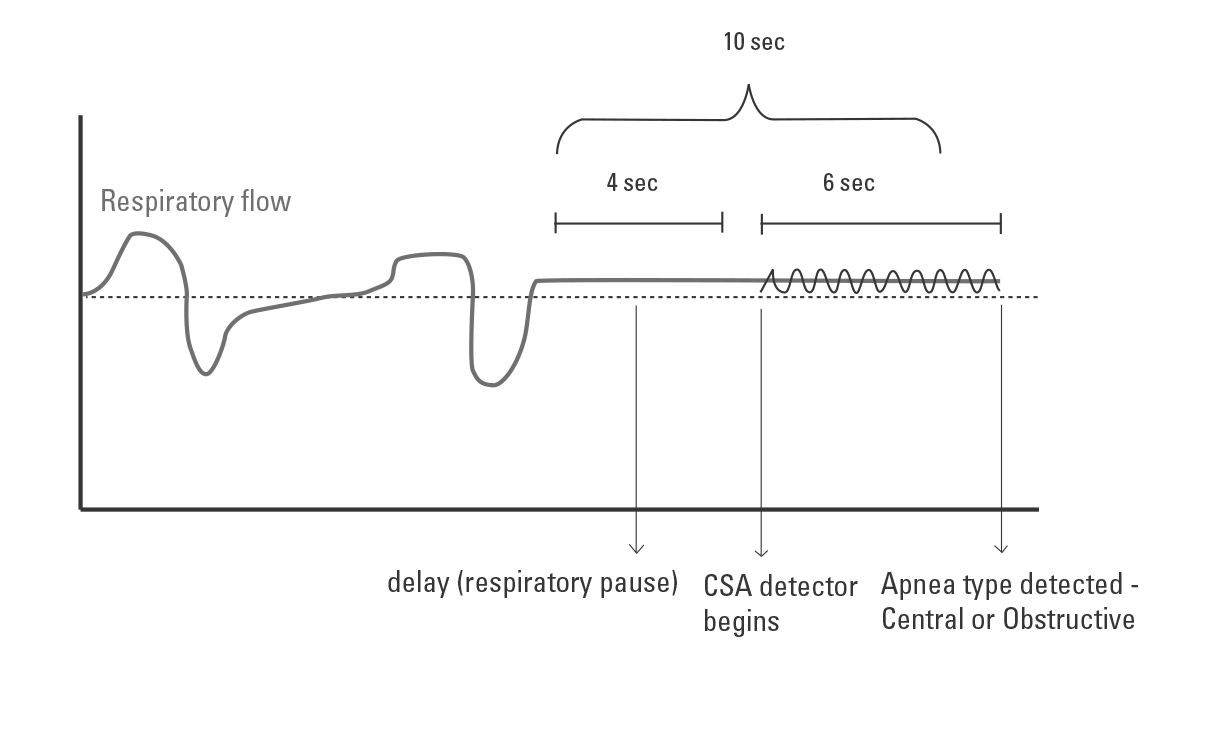Reporting
The AirCurve 11 VPAP Tx reports Respiratory Effort Related Arousals (RERA), and detects Central Sleep Apnea (CSA) and Cheyne-Stokes Respiration (CSR). The summary and detailed data of these parameters are available to view on ResMed's patient compliance software (data availability depends on device mode and parameter measured).
Available in S (with Easy-Breathe), CPAP, AutoSet, AutoSet for Her and VAuto modes.
The AirCurve 11 VPAP Tx has central sleep apnea (CSA) detection. The Summary and Detailed Data of these parameters are available to view on ResMed's patient compliance software (data availability depends on device mode and parameter measured).
The device detects both obstructive and central sleep apneas (CSA). CSA detection uses the Forced Oscillation Technique (FOT) to determine the state of the patient’s airway during an apnea. When an apnea has been detected, small oscillations in pressure [1 cm H2O (1 hPa) peak-to-peak at 4 Hz] are added to the current device pressure. The CSA detection algorithm uses the resulting flow and pressure (determined at the mask) to measure the airway patency.
 |
Available in AutoSet, AutoSet for Her and CPAP modes.
Cheyne-Stokes respiration (CSR) is a form of sleep-disordered breathing characterized by a periodic waxing and waning of respiration. The waxing periods (hyperpneas, typically 40 seconds in length) can include large gasping breaths that tend to arouse the patient while the waning periods (hypopneas or apneas, typically 20 seconds in length) cause blood oxygen desaturations.
The following example shows a typical CSR period.
 |
The following example suggests periodic breathing due to the frequently occurring apneas. However, when looking closely at the shape of the hyperpneas it can be seen that it is a typical OSA period.
 |
The AirCurve 11 VPAP Tx device reports the time during therapy in which it detected breathing patterns indicative of CSR. It analyzes the patient's respiratory flow for apnea/hypopnea events, calculates the time between these events, and characterizes the shape of breathing between them.
Available in AutoSet, AutoSet for Her and CPAP modes.
RERAs are periods of increasing respiratory effort which are terminated by an arousal. Increasing respiratory effort will be seen as airflow limitation.These flow-based RERA events are logged and stored as summary and/or detailed data and can then be viewed in one of ResMed's patient management systems.